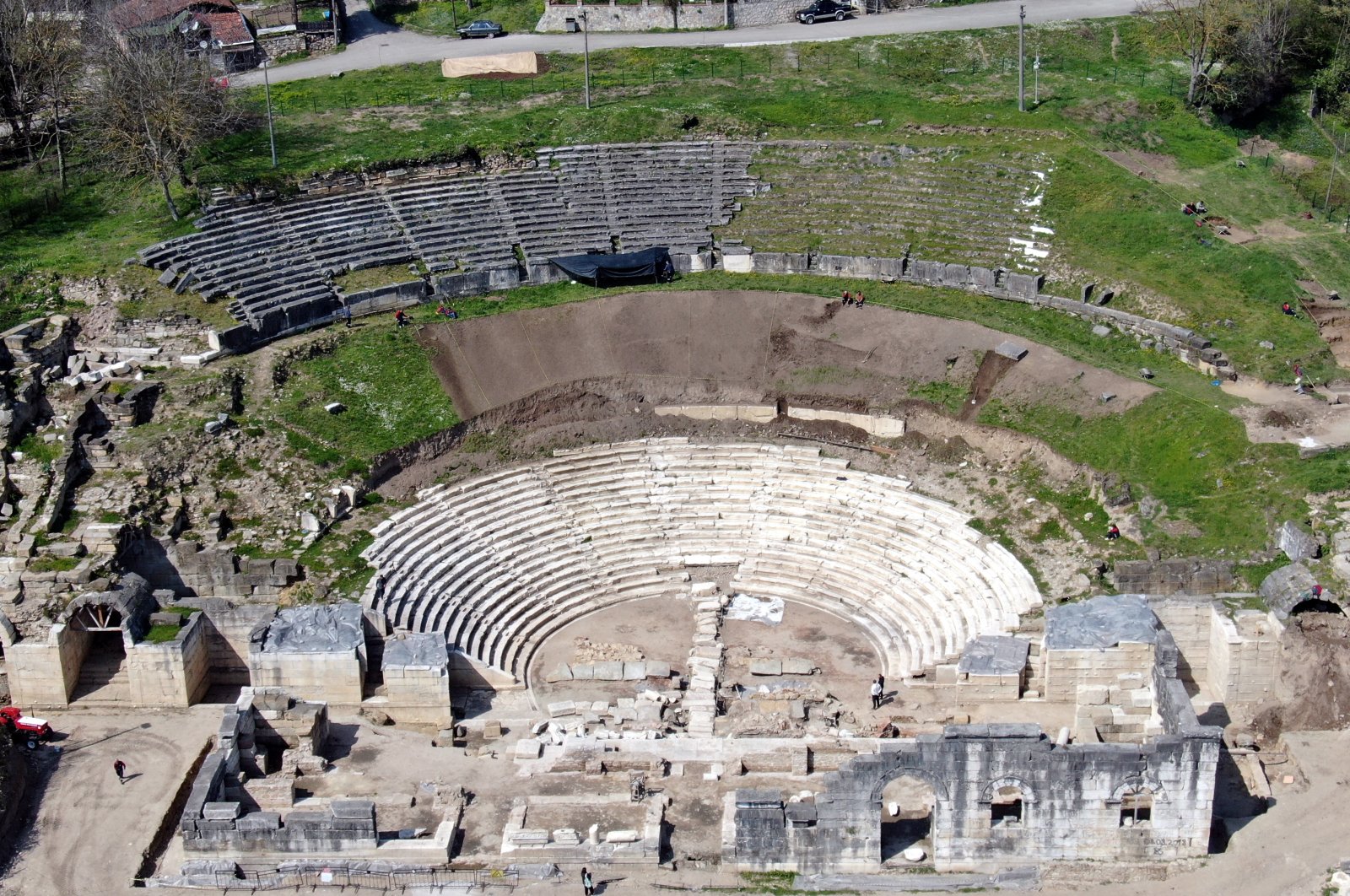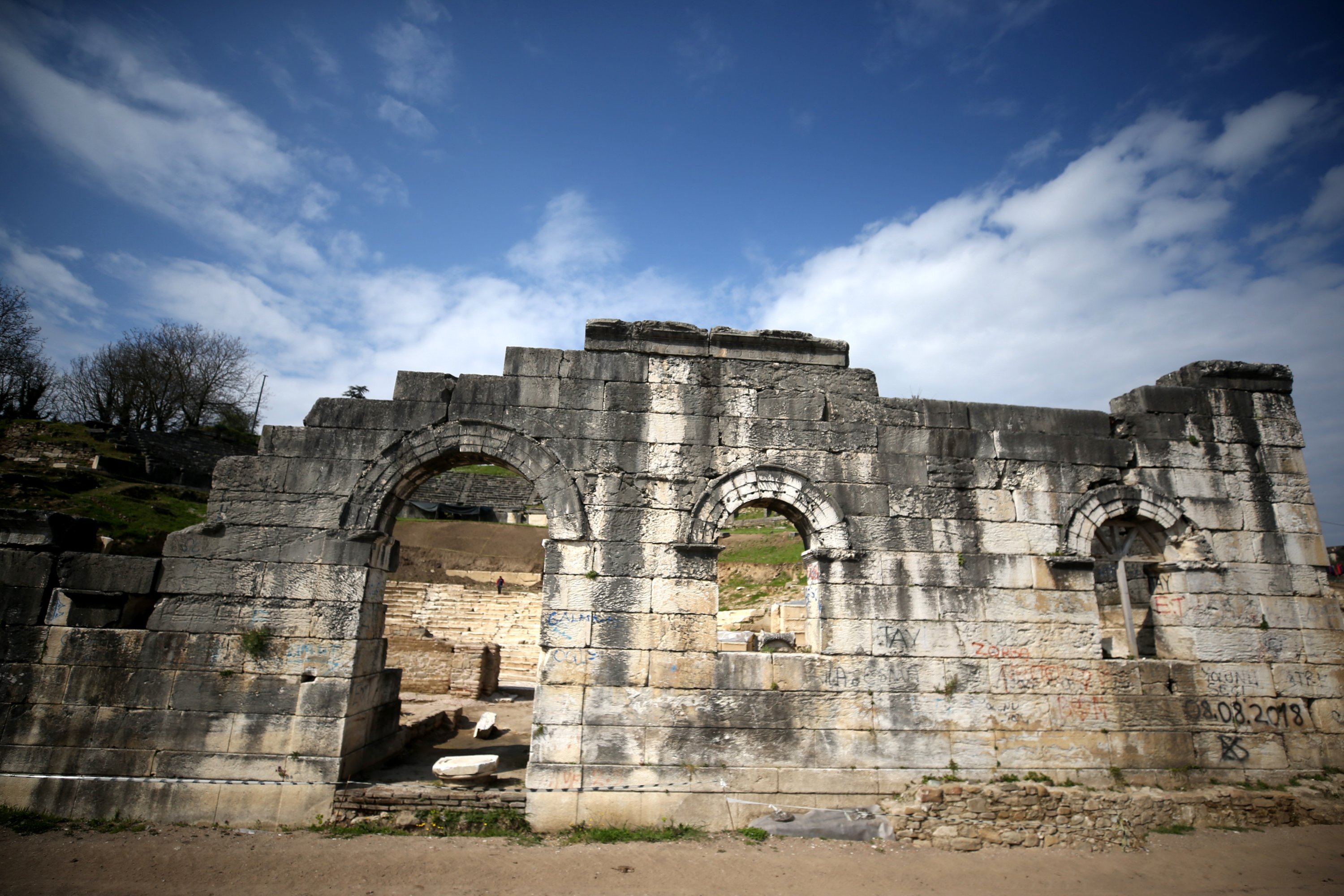
After the restoration works on the route to the historical ruins are completed, a "culture street” will be formed in the ancient city of Prusias ad Hypium, also known as the "Ephesus of the Black Sea Region."
Excavations continue on the middle and eastern wings of the theater in Prusias ad Hypium, which is located in Turkey’s northwestern province of Düzce. Experts are also working on revealing new structures in the Konuralp region of the ancient city, which includes structures such as an ancient theater, walls, aqueducts and a Roman Bridge.

In the region, a "culture street" will be created following the excavation and restoration works. The magnificent theater section currently undergoing excavations and culture street projects are expected to contribute to the tourism of the region.
Düzce Mayor Faruk Özlü told Anadolu Agency (AA) that with the culture street project, a destination center, will be constructed in the ancient city.
Dating back to the third century B.C., the ancient city of Prusias ad Hypium is known as "Hypios” and "Kieros” in earlier periods. The area was seized by Prusias I of Bithynia. The people of Bithynia, known for their opulent lifestyles, adorned the city with monuments and named it Prusias in honor of their king.
After going bankrupt due to their lavish way of life, the people of the region bequeathed the kingdom to the Romans. The influence of Latin culture on the city under Roman rule added to the richness of the city, building on its already rich architecture. The city became known as Prusias ad Hypium.
The city then passed into the hands of the Byzantines and Ottomans, respectively. Under Ottoman rule, it was handed over to Konuralp Bey, one of the first Turkish commanders who served in the establishment of the empire, by Osman Ghazi, the founder of the empire. This is how the region of the city received its current name, Konuralp.
